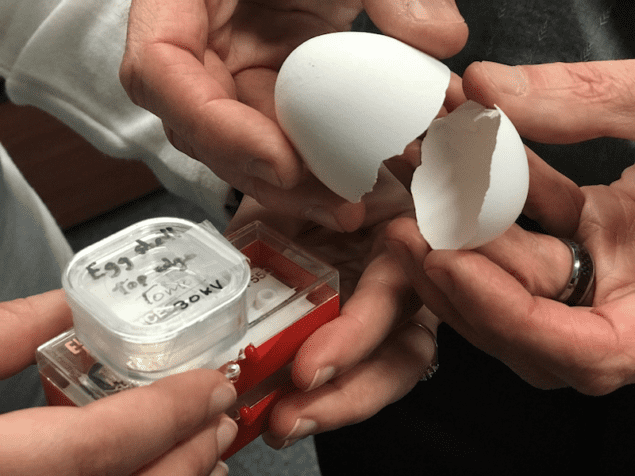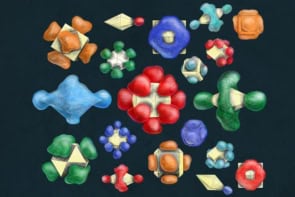
New atomic-force microscopy images and electron microscopy measurements have revealed that the nanostructure of the chicken eggshell changes during egg incubation, going from being very hard and strong to being much weaker just before the chick hatches. The shell strength appears to be determined by the presence of nanostructured mineral associated with osteopontin, an eggshell protein that is also found in composite biological materials such as bone. The finding could help in chicken breeding programmes to select for more crack-resistant eggs that are less likely to be infected by pathogens, as well as in the design and development of novel bio-inspired nanocomposite materials.
“Thanks to hundreds of millions of years of evolution, the nanostructure has developed to provide optimal material properties for something as seemingly fragile as an avian eggshell,” explains Marc McKee of McGill University in Montreal, Canada, who led this research effort. “An eggshell, which is made of a thin mineralized calcium carbonate (calcite) layer, is remarkably strong, and tough enough to serve its protective function during egg incubation, but it thins from the inside out at a certain point in time to allow the chick to more easily hatch and pip from its shell.
“As a biological nanocomposite, the interplay between a protein matrix and minerals allows for unique and ideal properties for a shell structure that has persisted since the time of the dinosaurs. We were able to partly recreate this nanostructure in calcite mineral in the lab using a single protein known as osteopontin.”
The role of osteopontin
The eggshell of the domestic chicken (Gallus gallus) is about 95% weight calcium-carbonate mineral and about 3.5% weight organic material/matrix (including water). There are hundreds of proteins in the eggshell matrix, but a major one is osteopontin (OPN). OPN belongs to the family of mineral-binding proteins thought to be responsible for controlling mineralization processes in the shell thanks to their particularly high negative charge and open flexible structure/
McKee and colleagues have now analysed the three layers of a chicken eggshell for the first time to better understand their nanostructure and mechanical properties, and how they evolve over time. These layers are: the vertical crystal layer (VCL), the palisades layer (PL), and mammillary layer (ML). They found that the amount of OPN varies throughout the layers and that it is most abundant in the VCL and PL layers. “Generally, smaller nanostructure correlated with harder shells,” says McKee.
Imaging an eggshell’s interior
“Amongst many methods, we used a focused-ion beam to cut a very thin slice of an eggshell so that we could then image its interior at the nanoscale with electron microscopy,” he says. “We also used atomic force and scanning electron microscopy to examine cut and fractured eggshells to obtain fracture-surface topography information.”
To find out whether OPN might be able to induce nanostructural changes in synthetic calcium carbonate, the researchers then grew calcite crystals in the presence of different concentrations of OPN and examined their internal structure using AFM and high-resolution transmission electron microscopy. They also measured the hardness and elastic modulus of these nanostructured layers in nanoindentation experiments and found that higher concentrations of OPN lead to smaller nanostructural dimensions, and thus greater hardness, than lower OPN concentrations.
Recreating eggshell structures
“Thanks to these experiments, we were able to partly recreate in the lab the nanostructure that was seen in the eggshells,” McKee tells nanotechweb.org. “The findings from these studies may inform the design of new synthetic nanocomposite materials with desirable properties.
“Nanocomposites are becoming increasingly more sophisticated and new materials are being developed by many industries. These materials can be made to be both strong and lightweight, for instance,” he adds.
“A better understanding of eggshell nanostructure might also allow us to select for strains of hens that could consistently produce stronger and tougher eggs, which could be more resistant to pathogens (such as salmonella) that cause food poisoning,” he says.
The research is detailed in Science Advances DOI: 10.1126/sciadv.aar3219.



